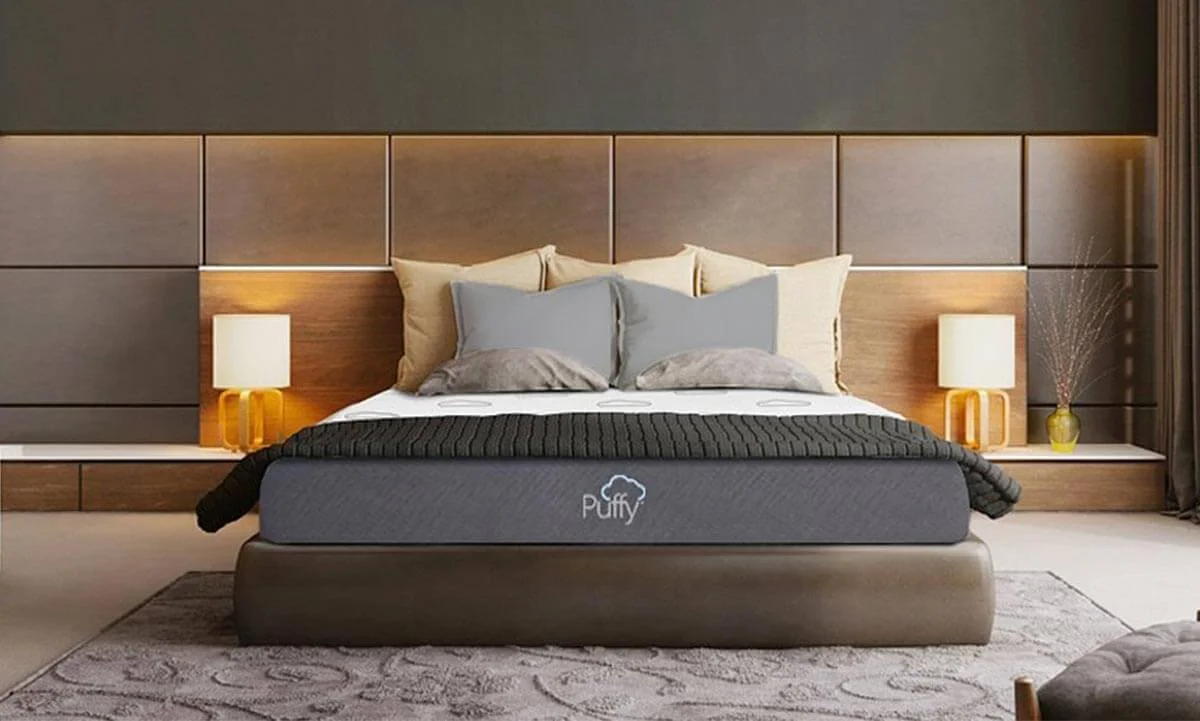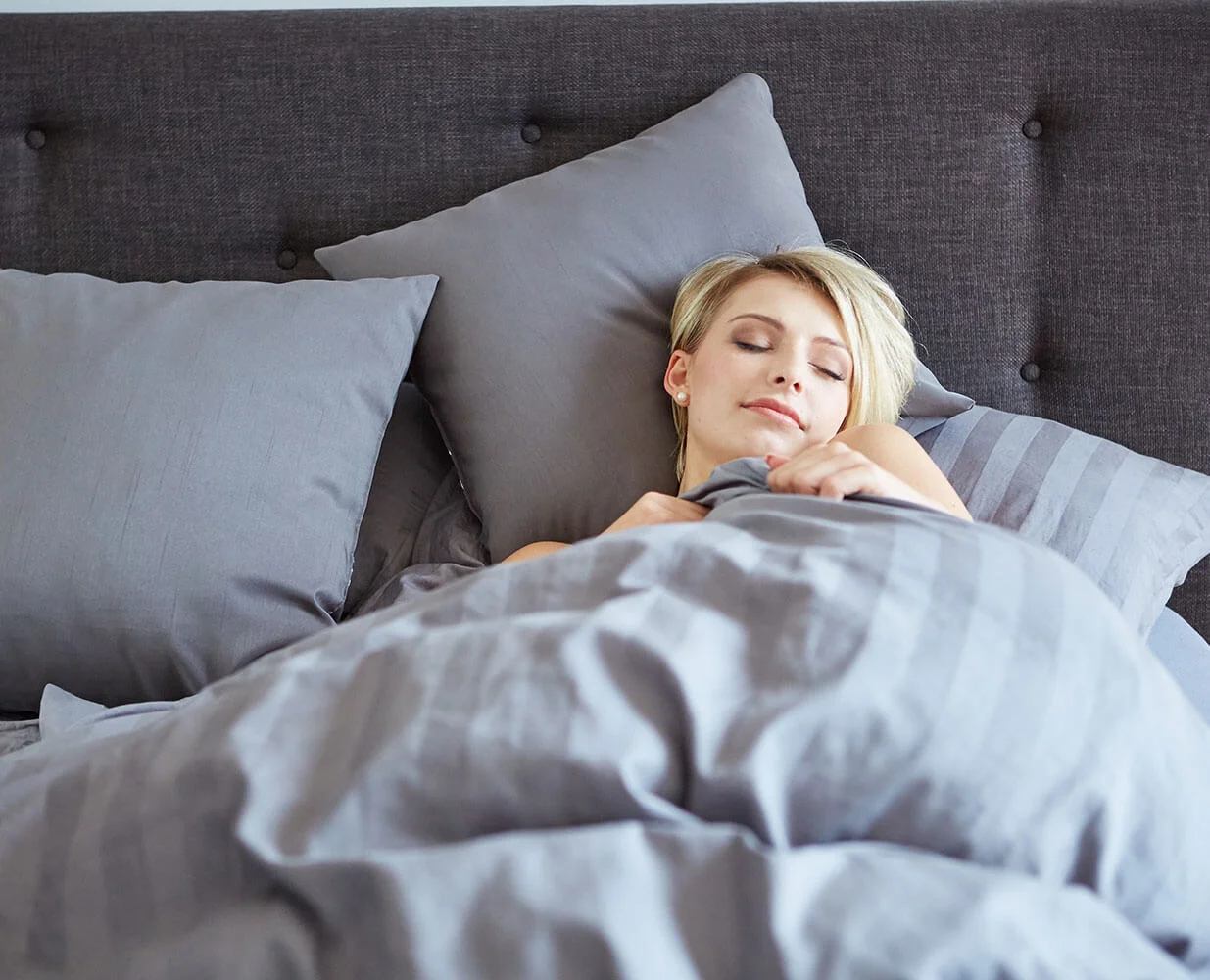Guide to the Right Mattress Size and Dimensions
Shopping for a new mattress? Having trouble finding the perfect bed sizes for your new organic mattress. Before you start testing out firmness and support—you need to make sure that the mattress itself is the right size from twin mattresses to queen mattresses. This is one of the most important elements in buying a mattress and is something that you should pay close attention to when shopping. The good news is, we have developed a mattress size guide that will help you make sure you are buying the right sized mattress for you, your family and the space in your home.
Step 1: Measure Your Room
Guide to the Right Mattress Size and Dimensions
Of course, one of the biggest factors that can impact mattress size, has to do with how much size you have available in the room you are buying a mattress for. You need to make sure that you physically have enough space to set up the mattress and enough space to maneuver around the mattress and to get in and out of the bed comfortably.
Recommended Room Sizes
There are actually recommended room sizes for different bed sizes. Of course, while there are always exceptions to the rule, here are a few rules of thumb to help guide you.
Recommended Mattress Size For Your Room
Crib sized mattresses are best suited for rooms that are 7 x 10’.
Twin size mattresses are best suited for rooms 7’ x 10’ or if you are putting two twin beds in the same room as many people do—10’ x 10’. A short twin mattress (which are often used in motorhomes and campers are best suited for 7’ x 10’ rooms).
Twin XL beds are great for rooms that are 7’ x 10’ or bigger.
Full beds will work best in rooms that are 10’ x 12’ in size due to the extra width that comes with a full bed. If you are planning on putting a full size mattress in a smaller room such as a 7’ x 10’ room—you may need to push the bed up against the wall.
Full XL mattresses should be in rooms that are at least 10’ x 12’ however, they are typically best suited for rooms at are 10’ x’16—to allow for enough walking room behind this longer mattress.
Standard Queen beds need to be in at least rooms that are 10’ x 10’ or 10’ x 14’ depending on how much walking room that you want around and behind the bed. An Olympic Queen also needs a similar amount of space.
Standard King beds typically require a room that is 13’ x 13’—depending on how much walking room you want. They can, however, fit in a 10’ x 12’ if you don’t mind your bed taking up a majority of your space.
California King mattresses require pretty large rooms. You will need a room that is at least 12’ x 12’ if not, 12’ x 14’ in size to accommodate this bigger mattresses.
When measuring for your bed, it is best to keep around 2-3 feet of walking space around the bed, although four is preferred. Remember that beds like Queens and Kings that accompany two sleepers will require equal space on each size.
If you are uncertain a mattress will work in a space, take the measurements we have below and outline the mattress size in tape to see if it will work. Even if you assume that your mattress is going to fit inside a room—it is still important to take the time and measure beforehand. There is nothing as frustrating as ordering a brand-new mattress only to find that it won’t fit in the intended space.
Step 2: Know Your Mattress Size Options
Your Mattress Size Options
As you start shopping for a new mattress, you may be surprised by how many different mattress sizes are available. One of the biggest mistakes that new-mattress buyers tend to make is that buying a mattress that is either too small for the people using them, or too big for the space available.
Here are the basic mattress sizes available and some tips on buying the right mattress within each category.
Crib Mattress – 27” x 52”
This is the industry-standard size for a crib mattress and is one that will fit in most standard cribs on the market. You should always double-check your specific crib before purchasing.
This mattress should be rather firm, according to pediatric experts and should be used by children until they are either the age of 2 or when the child has reached 35 inches tall.
Twin Mattress – 38” x 75”
Twin mattresses are the smallest mattresses designed for a bed frame. They are great for kids who have outgrown crib mattresses but may be too short for some adults. Twin mattresses are also a great option for guest beds because they don’t take up as much space in smaller rooms.
Twin XL Mattress – 38” x 80”
As the name suggests, this mattress is the same as a twin only five inches longer. This makes these mattresses a similar length as a King or Queen mattress. This is a great option for adults who live in tight spaces, guest rooms or an option for smaller children. This is also the size bed you will find in many dorm rooms.
Full (Double) Mattress – 54” x 75”
Full mattresses, also known as double mattresses are only about 15 inches wider than a twin or single mattresses. They can fit two people, but are only 75 inches long, which means they may be too short for some adults. It is a popular bed size for many teenagers and older children who may want more room than a standard twin bed provides.
Full XL Mattress – 54” x 80”
As the name suggests, a Full XL mattress is the same as a standard double with five extra inches on the end. This makes it the same length as a Queen or King bed, only more narrow. It is a popular option for couples and is the size bed you may find in hotel rooms.
Queen Mattress – 60” x 80”
Some people think that Queen mattresses are the same as full—but they are actually about 7 inches wider and 5 inches longer than full mattresses. This makes Queen mattresses a popular option for couples who want more sleeping room, but who still need some more living space in their bedroom—so don’t want to commit to a King bed.
Olympic Queen Mattress – 66” x 80”
The Olympic Queen Mattress isn’t the most common size mattress, but it has a few subtle differences from a standard Queen that should be noted. While this mattress is the same length as a Queen bed, it is six inches wider—making it a great option for those who can’t decide between a Queen and King mattress.
King Mattress – 76” x 80”
A King mattress is one of the most common size beds for adult couples as it gives both parties plenty of sleeping space and can even accommodate a child, or pet in the bed as well. A king is about the same size as two twin XL beds pushed together and is much bigger than a Queen. Couples sleeping in a King have about 16 inches more width than they would with a Queen bed.
California King Mattress – 72” x 84”
There are some misconceptions about California King beds, with many assuming that they are much bigger than a King mattress. They are not. They are actually the same overall space, it is just repositioned, with the California King mattress being 4 inches narrower yet 4 inches longer than a regular King. This is helpful for couples who don’t need as much width but who are taller and can use the extra length.
Short RV Queen Mattress – 60” x 75”
This is the most common size mattress for RVs and motor homes. The Short Queen is shorter and narrower than a Queen mattress, but still bigger than a full. So make sure you pay close attention when picking out your bedding for this mattress.
Of course, you should always double-check the exact dimensions from the manufacturers website before making a purchase. Some brands may vary their sizes by a fraction of an inch—which may seem like a small amount but can actually make an impact on the positioning in your room.
Step 3: Make Sure Your Mattress, Foundation and Bed Frame are the Same Size
Make Sure Your Mattress, Foundation and Bed Frame are the Same Size
Buying a new mattress isn’t always as simple and straightforward as it may seem. If you are updating your mattress size, make sure that you also update your foundation and bed frames as well. Everything needs to be the same size in order for your mattress to be fully supported. Most mattress stores and retailers will sell bed frames and foundations along with their mattresses—but they typically aren’t included in the price of the actual mattress, so you will need to account for the extra expense.
Some of the newer online mattress retailers may not have these products available, so you will need to buy your frame and foundation from a local department, mattress or furniture store. Note that sometimes it can be more difficult to find the specialty size mattresses such as Olympia Queen or RV Short Queen mattresses.
How Often Should You Replace Your Mattress?
Replace Your Mattress?
If you have been considering a new mattress, there is one thing that may motivate you to make your purchase official—advice on how often you should be replacing that mattress. What many people don’t realize when mattress shopping is that mattresses have a shelf-life so to speak. While a great mattress can least you a number of years, it doesn’t mean that your mattress is going to last forever.
Helpful Tips to Determine When It’s Time to Replace Mattress
Research has found that most mattresses have a life span of about eight years. However, this isn’t a hard and fast rule. This can vary by the mattress type, who is sleeping in the bed, the manufacturer and how you actually sleep. The best way to determine when it is time to replace your mattress is to look for the following clues:
The mattress is sagging. If you have a dent in your mattress that is the shape of your body—it is a signal that your mattress is worn.
Your mattress is uncomfortable.
The mattress has noticeably changed its consistency or firmness.
You wake up feeling sore or stiff, your mattress may be to blame.
Your allergies or asthma are acting up. An old mattress may be holding on to dust mites that can give you asthma attacks or allergic reactions.
These are all indications that your mattress is now past its prime and ready for replacement.
Mattress Sizing and Measuring Guide
If you think it is about time that you replaced your mattress—make sure you keep this sizing and measuring guide to bed sizes and mattress sizes with you so that you can make sure your mattress fits in your new space.
Karen A Mulvey is a personal social blogger and mom with 14 years of experience in the every day world of motherhood and sustainable product research. Karen is on a mission to help everyday families select sustainable, non-toxic organic products, stop stressing about uncertainties on sustainable home goods and apparel, and start living the life they’ve always wanted.
Follow Karen at @karenAmulveycs | Karen A Mulvey

















